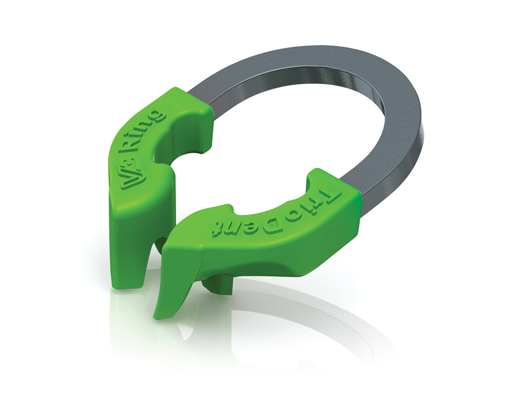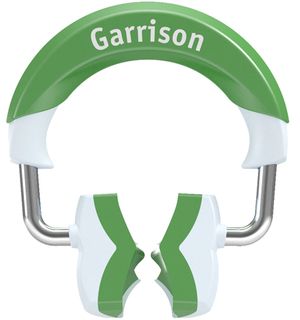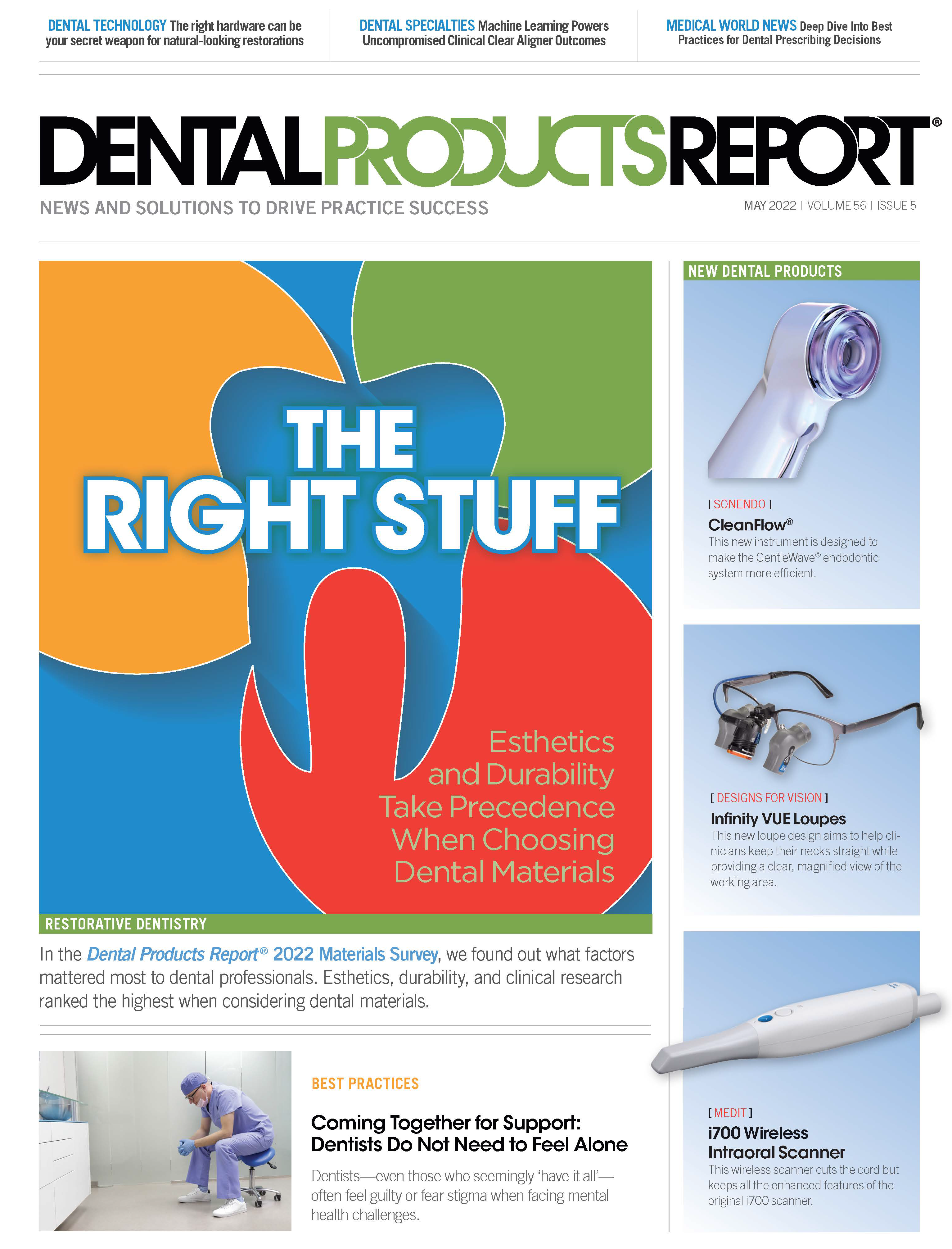This Is the Shape of Things to Come
The right hardware can be your secret weapon when placing natural-looking restorations.
The human body is the most complicated and impressive machine I can imagine. You probably feel the same way. In the early technology days of the computer network, the original designers of what would eventually become the Internet were designing and building a command-and-control system for the U.S. Military. It was in the days of the cold war and military minds were very concerned about a “decapitation attack”. The concept was a very real fear and dealt with the possibility of Russian first strike that might cut off the decision-makers from the rest of the armed forces. To help prevent this, the network designers designed the network so that all the computers were connected to all of the other computers. This meant that if 1 computer went down, the network would simply “re-route” the electronic traffic around the damaged system. As long as there were at least 2 systems online, the communication continued uninterrupted.
The computer network experts considered this a genius move. Yet, the human body had been using the concept of collateral circulation and redundant systems since the first human evolved from pond slime.
The human body is a masterpiece of engineering. It can take tremendous beatings and continue to thrive. It can be attacked by a huge number of pathogenic living organisms and win the battle. If it comes into contact with an organism it has never seen before, it can quickly start up an investigative process that can find the enemy’s weaknesses and then exploit them to destroy that enemy.
It is composed of many redundant systems that work independently of the others to ensure that if a critical process is damaged or lost, things can continue on, and the human organism can continue to survive. It can even endure the loss of critical parts or limbs and keep on living.
Part of that amazing ability is, for lack of a better description, the design and system layout. Putting organ systems like the kidneys on opposite sides of the body means that if an accidental injury happens to one side of the body, the contralateral side still can function. The redundancy is incredible and fascinating.
Another part of that amazingly functional machine is the actual shape and placement of anatomical parts. The eyes are placed slightly inside the skull with bone around them to prevent damage from the outside environment. Joints are composed of smooth articular surfaces on both the socket of a joint and the bone head that fits into it to ensure easy and pain-free movements.
All of these things work together, to make that amazing symphony of biological systems work in absolutely perfect harmony. Of course, nothing works in a vacuum and as I’ve already stated, the human body fights a lot of battles. The body is a microscopic war zone of agents attempting to speed up its demise. Between outside biological insult and the ever-present risk of damage due to accidents and injury, the body does not stay pristine very long.
The War Zone of the Oral Cavity
As all of us know, the oral cavity is a difficult place to manage. In fact, it is so difficult to manage that I don’t think we give ourselves enough credit for how well we, in the profession, affect its outcomes. The combination of bacterial attack on both the dentition and periodontal systems as well as the potential for accidental injury, make managing the oral cavity a dicey process at best.
As we all know, recreating mother nature is an incredibly delicate balance and requires a great deal of training and expertise to do things “right”.
Any practitioner can remember times when they changed something in the mouth just a tiny bit and discovered that even a tiny change can cause unexpected challenges. Proper contours and emergence angles are intrinsic to success and I’ve often found it incredible when changing something like that brings about a result that I just hadn’t foreseen.
We’ve all had those cases where changing the contours of a tooth or teeth in the aesthetic zone suddenly results in food getting caught in the interproximal “triangles” at the gingival simply because those contours are slightly different.
Things like that are incredibly common and they are even more common with direct restorations. The really interesting thing about that?The determining factor of these contours is not not usually the operator, the material, or the patient. No, the determining factor (or at least the biggest part of the determining factor equation) is the matrix system chosen & used.
Contour, Form, and Amalgam
Here’s the deal. When we are trained initially to perform indirect restorative procedures, we are generally trained on the easiest aspects first. Once any student is trained and can easily accomplish “the basics” more intricate parts can be introduced into the procedural process.
For dentistry, that means that almost everyone is trained to place amalgam first. As I’ve said many times in the past, procedurally, amalgam is a very forgiving material. Therefore, clinical neophytes are introduced to it first. Once the basics of a one surface indirect restoration are digested and understood, two surface restorations and then brought into the mix.
In order to recreate a missing wall of tooth structure, a form is needed, and in restorative dentistry, this form is a matrix band. As far as I can tell from my research, matrix bands have been around since at least 1945, but perhaps longer.
These early band designs, especially the most popular Tofflemire, are placed circumferentially around the tooth and then tightened around the tooth with a “retainer”. When tightened properly, the band resembles an inverted cone. While this helps recreate the missing wall, it does little in regards to recreating the natural shape of the tooth.
Because it is a very dense material, amalgam can be “packed” into the preparation and forced against the matrix band. The matrix band is made of a material that is a softer metal and can be distorted in shape by applied pressure. The act of condensing and packing the dense amalgam material against the band causes the band to change shape. The condensation process results in a band that has been distorted to resemble the natural shape of the missing tooth structure and helps recreate the all-important proper anatomical form of the natural tooth. This form makes the restorative material into a shape that has the interproximal contact in the correct place. When the band is removed, the restored tooth closely resembles its original shape and form. The restorative material and the matrix band “grew up together” and naturally evolved hand in glove.
Enter Composite and the Human Factor
In the early part of this millennium, composite materials had been subjected to a lot of use as well as a lot of research. Doctors saw the advantages of bonded materials while patients saw the cosmetic benefits. Because of these things, more and more doctors began to place more and more composites.
As we’ve already established, anatomical contours are really important. What hasn't been addressed yet is that human beings are very much creatures of habit. We have a serious tendency to do things the same way over and over simply because “that’s the way we’ve always done them.”In evolution, that can be a good thing. Trails exist because human beings follow the pathway of those that came before them and survived. If staggering through the jungle gets you eaten by the tiger, stay on the trail!
The disadvantage is in things like restorative dentistry. The original matrix band developed along with the restorative material and they worked together well. However, composite is a material with very different physical properties from amalgam. When composite is pushed into a prep, it doesn’t distort the matrix band simply because it lacks dentistry. Instead, the matrix band distorts the composite. The matrix band that has a contact even with the adjacent tooth’s marginal ridge will create a composite restoration with its contact even with the adjacent tooth’s marginal ridge.
We used the same matrix system “because we’ve always done it that way”, but in reality, the matrix system did not help create the end result we needed.
Enter the Matrix
As doctors began to see two surface restorations on bitewing radiographs at recare, they realized that something needed to change. There were many efforts to improve existing systems, but they were more or less concepts of “don’t raise the bridge, lower the river”. By that, I mean folks tried tweaking the existing way to get it to work better. In reality that didn’t work out very well. Fortunately, there were others who decided that rather than trying to hack amalgam systems to work better with composite, it was just easier to create a system that was designed for composite at inception. This gave birth to the “sectional matrix” solution or what I refer to as “C-Bands”. These are “C” shaped bands that are placed in the interproximal space and held in place with “rings” that also slightly push the teeth apart to give a tighter contact. The bands are formed with the proper contour not only buccal to lingual, but also occlusal to cervical. They are created in a way that lets the composite form in a way to correctly recreate the interproximal surface and place the contact at the proper height and the proper contour. The result is a perfectly formed interproximal surface.
There are several of these “ground-up systems” on the market. I’m going to discuss my two personal favorites.
Triodent
Triodent utilizes bands that are formed to the proper contour (also with the appropriate height of contour) right out of the package. The bands also have very critically placed small holes on each side, corresponding the buccal and lingual, as well as a hole in a small tab at the top (Figure 1). The system also comes with a remarkably well-made set of “pin tweezers”. These tweezers have a small pin at the tip to engage the small holes on the band to make holding the band and removing it simple. Once the pin is in this small hole, you cannot drop the band. It makes placing the band very easy and removing the band extraordinarily simple.
Figure 1. Triodent “V-Ring” system.

The big innovation for this system was the invention of the “V Ring”. As we all know, placing a wedge at the cervical of the matrix band keeps the band against the tooth. Placing a ring with small tines into the interproximal embrasure area was always a challenge because the wedge would get in the way. To eliminate this problem the tines of the Triodent rings split to form a “V” shape which allows them to straddle the wedge.
The wedge is also a forward-thinking product, made of flexible rubber that adapts well against the cervical margin and fits easily between the tines of the “V-Ring”.
Garrison Composi-Tight® 3D Fusion™ Sectional Matrix System
Garrison is a company that works incredibly hard at outside-the-box solutions. One of the things I love about these folks is that they are always innovating which means you can always expect constant improvements in their products.
Their bands are 3-dimensionally contoured, ultra-thin, and dead soft. The dead soft aspect of the bands allows for the user to burnish them after placement to adapt to the adjacent contact no matter how unusual that contact area might be. They do not have holes to engage with, but they do have a little tab at the top that Garrison calls a “Grab Tab”.
The rings in a sectional matrix system are designed to both hold the matrix band and to apply pressure. The ring is expanded by use of a forcep, placed in the interproximal against the band, and then released. As the tines attempt to move back together, they place pressure on the teeth they are engaged against. This pressure drives the teeth apart microscopically which means, when the ring is removed, the teeth rebound back to their original position creating a remarkably snug contact.
Figure 2. Garrison Composi-Tight 3D Fusion Sectional Matrix System

The rings in this system have been created to deal with different clinical situations. There are two different heights of rings for both short & tall teeth. There is also a ring for preps that are wider than normal which makes dealing with those clinical situations that have a proximal box wider than the adjacent tooth, easier and less stressful.
These rings also have rubberized “grippers' ' on the arms of the tines (Figure 2). These retention extensions grab the matrix band as well as the surfaces of both teeth and keep the rings from moving or slipping up and/or off the tooth. One of the challenges of any sectional matrix system is how well it will engage and stay on teeth that are anatomically shorter than average. This also allows the rings to apply plenty of separating force while still staying securely in place.
The Garrison wedges are also incredibly functional. The wedges appear similar to feathers with the vanes of the feather extending to engage tooth structure. When I first used them I was amazed at how well these wedges adapted to the cervical margin and how strongly they worked to hold the band against that cervical margin. They are color-coded according to their size and work incredibly well.
Anterior
The smart minds at Garrison Dental Solutions have even created a sectional matrix system for Class III preparations in the anterior. It is called the Fusion Anterior Matrix System and it can greatly simplify the placement of anterior composites.
The system does not use any separating rings, but uses incredibly thin metal bands that are much thinner than mylar strips. They slide between the teeth easily and can, if need be, slip into the interdental sulcus for deeper preparations without causing gingival hemorrhage.
They are paired with a unique wedge which is curved and is used to hold the band snugly while its curvature is used to enhance engagement on the labial and lingual surfaces. Rather than the wedges going straight through the interproximal space, they are placed in a “C”type orientation. The highly curved wedges are placed with the inside of the curve in contact with the tooth being restored which greatly enhances stabilization of the band and creates restorations with life-like anatomic contours which greatly decreases finishing and polishing times.
Wrapping Up
Legend has it that when Michelangelo was asked how he created the statue of David his reply was, “I just chipped off everything that didn’t look like David.”Whether that is true or not, I don’t know. However, I *do* know that there have been times that I’ve performed a composite restoration that, when the matrix was removed, looked nothing like the tooth I just restored. So I then spent a great deal of time “chipping off everything that didn’t look like a tooth”. That might have worked really well for Michelangelo, but it doesn’t work well in dentistry.
The secret is to find hardware that allows you to place restorations that look natural and perform in the manner that millions of years of evolution have proven to be the best. Those systems exist. It is our job to find them and use them to the best of our abilities to help those who trust us with their care.

ACTIVA BioACTIVE Bulk Flow Marks Pulpdent’s First Major Product Release in 4 Years
December 12th 2024Next-generation bulk-fill dental restorative raises the standard of care for bulk-fill procedures by providing natural remineralization support, while also overcoming current bulk-fill limitations.